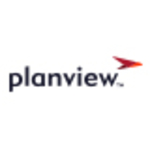What is our primary use case?
We do project management and resource management in PPM and we use mainly that piece from it, right now.
It's been performing well. There are some drawbacks, some features we can't really utilize considering our GAAP business process. So we face issues sometimes with that, that we can't fully utilize CA PPM resource management.
What is most valuable?
Provides an overall picture, it gives you the ability to store your capex, capital and expense budgets, on projects. You can really drill down with their new utilities, you can use Clarity. You have Allocation Editor and Assignment Editor that give you more flexibility in entering the data.
How has it helped my organization?
You get rid of Excels, that's the main point. We are so used to, in the old days, capturing data in Excel; people are really use to doing that. In general we were working in Excel workbooks. We were doing things like ETC assignment, how much they will be, how many hours you're assigning, what the cost will be at the end of the day. With CA PPM we have really gotten rid of those Excels and are utilizing the resource managem
ent and Project Management pieces.
What needs improvement?
I'm interested in something that would give you flexibility in loading the data to PPM. We have some other utilities, which CA is providing, but sometimes it takes time for users to enter the data into Clarity, the resource management piece.
They need something so that if we, say, send some sheets to users, or for the scenario where not everybody has access to Clarity, but are part of planning; those people should be able to upload data directly to Clarity.
We are using another tool to do reporting, or load data inside Clarity. If CA provided that, that would be great.
The reporting piece is really slow right now, with Jaspersoft. CA is doing a lot on that. They have opened a port that we can connect from an outside tool to the Clarity data warehouse, database. But it would be great if they could do something on Jaspersoft because sometimes it takes 20 minutes to for a report to show up; not all, but some do.
What do I think about the stability of the solution?
Stability is going well. I'm really hoping for the new UI. I heard it's going to be something like Excel, so we can really do a copy-paste, drag and drop things. I think we will be utilizing it more and longer.
What do I think about the scalability of the solution?
In terms of scalability, I can't say much. We're trying to use different features in it, because we had so many customizations. Actually, we revamped Clarity in the last couple of months, where we're trying to use more out-of-the-box functionalities, so I'm hoping that will be pleasant.
How is customer service and technical support?
It's okay, right now. It used to be very good. The responses are not really quick. You don't get a response immediately, you have to do a lot of follow-up. We already brought this up, and we might have a support person specifically for us with whom we can work.
In the past it was very good, but now I see it is weak, we have to follow up a lot.
What other advice do I have?
When it comes to selecting a vendor we're actually trying to not have more vendors, because CA is now providing the different utilities. We have another system - there are a lot systems that are integrated with our Clarity environment right now. I have heard about a lot of things which we did in past, buying products from another vendor, CA already has those utilities so we are looking at that.
I haven't used any other products so I can't really compare with anything else, but I gave it a seven out of 10 because it's not customized per client. Sometimes we want to do something but we are stuck because Clarity doesn't allow you to do it. There are a lot of restrictions in some areas and, considering we are on SAS, we run into a lot of restrictions. It's a generic product, so sometimes it doesn't follow our business rules. And there are some scenarios in which is Clarity is not behaving the way it should. We asked about it, but I didn't get any use-case for it. So there are some areas which need some improvement.
We don't use the Portfolio Management piece, but I'm really happy with Project Management and resource management. So if you're looking for something with granularity, Clarity can do it.
Disclosure: I am a real user, and this review is based on my own experience and opinions.
















